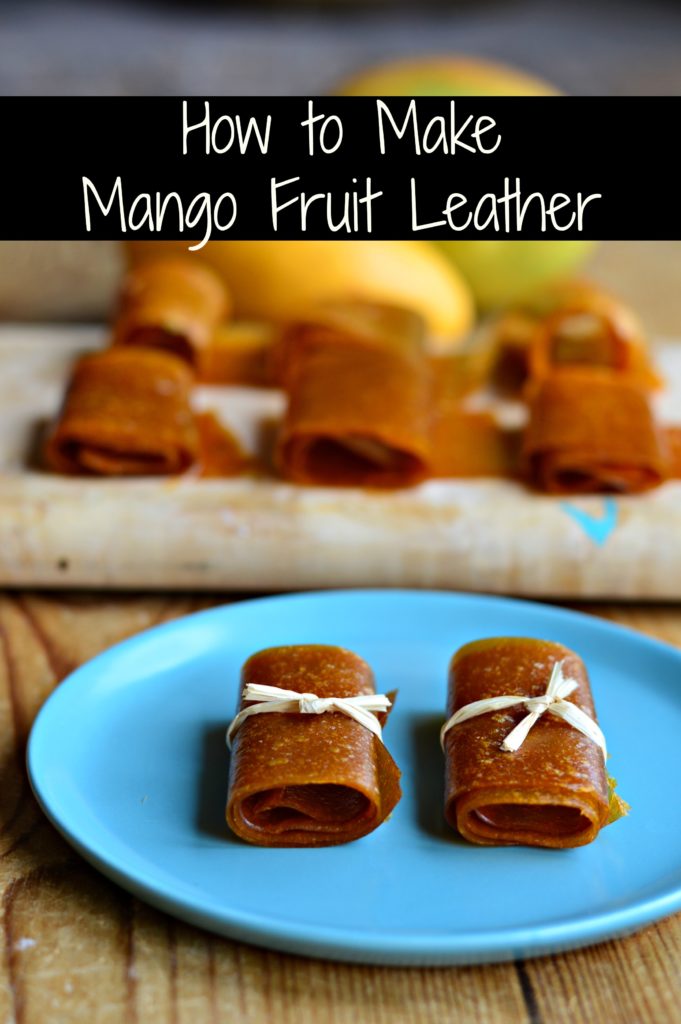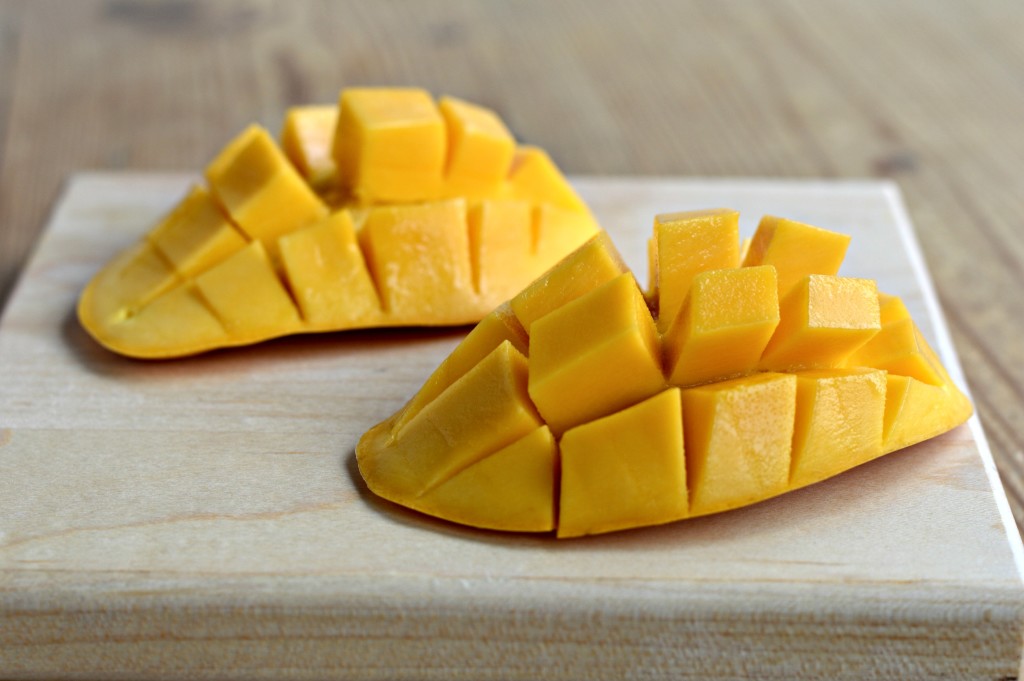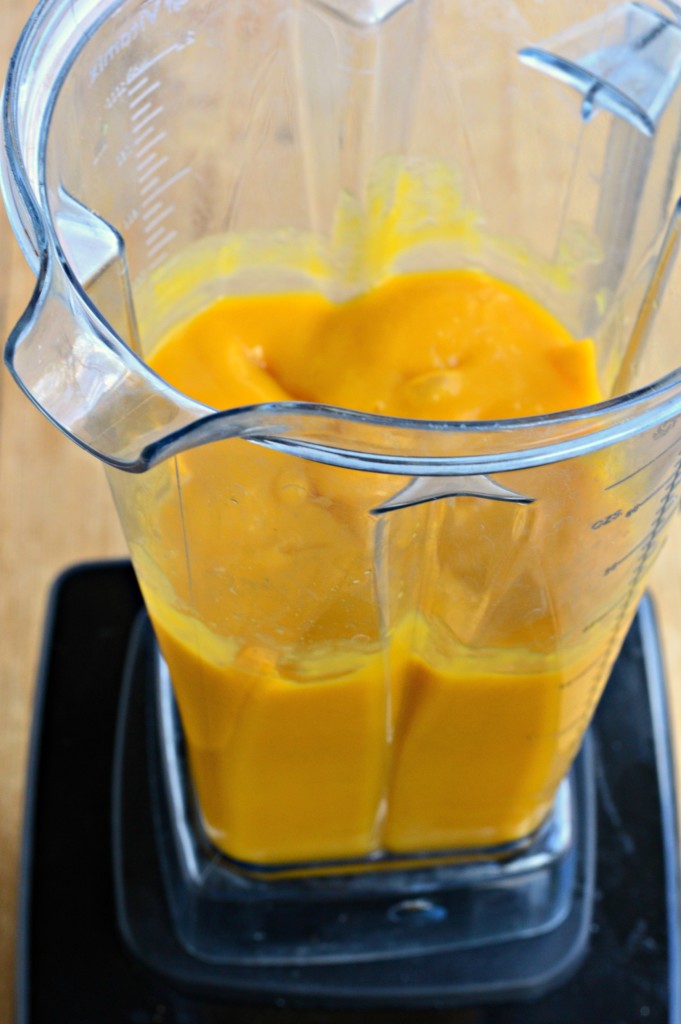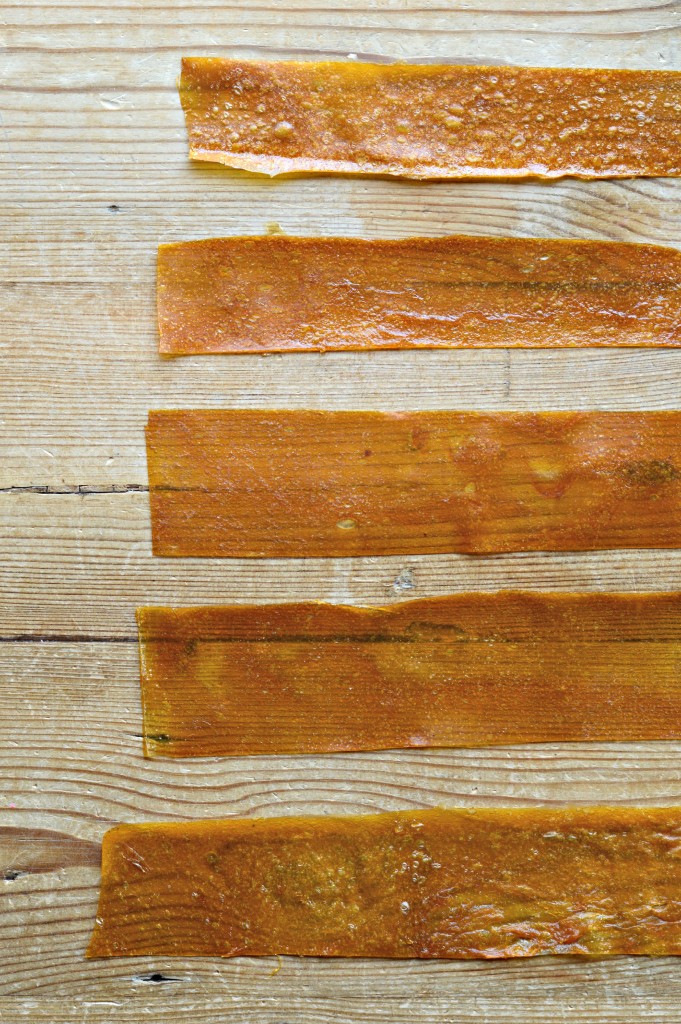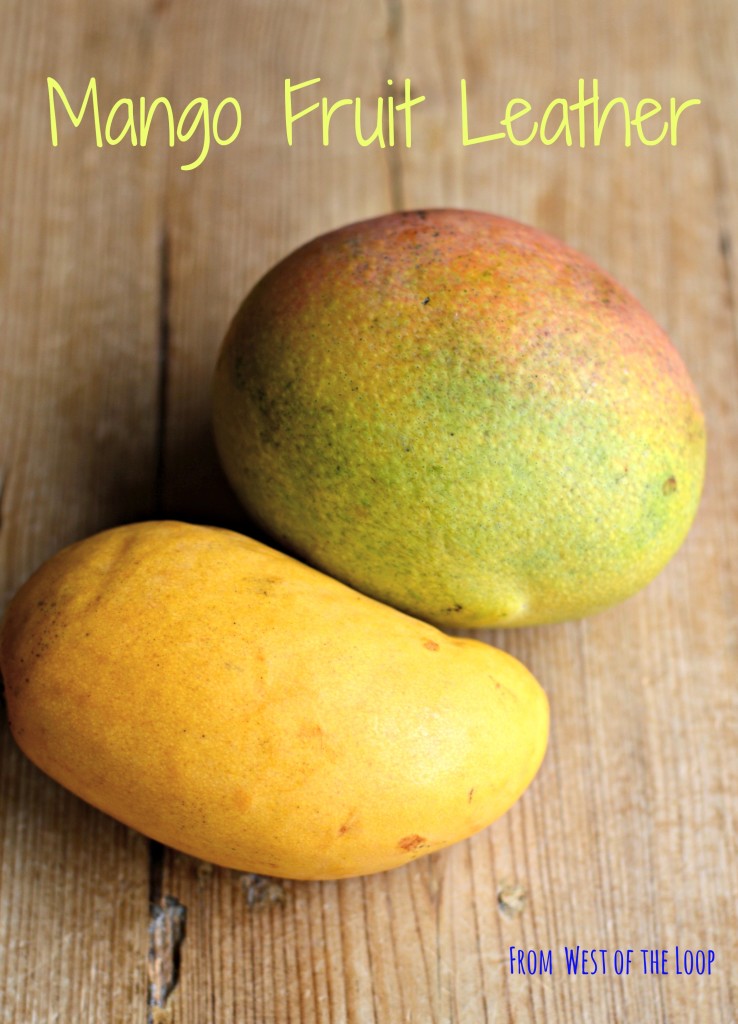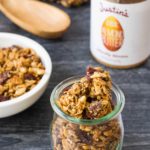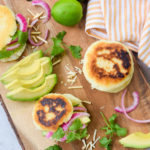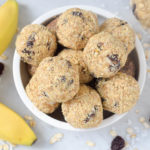I was so inspired by the Kids in the Kitchen cooking class that I attended with the National Mango Board last week that when I saw the small yellow Ataulfo or champagne mangos on sale for $1 each at my local Whole Foods, I stocked up. Faced with a crop of ripening mangos and an upcoming Chicago Food Swap, I put my DIY hat on and decided to try my hand at homemade fruit leather.
Making fruit leather at home is very easy and you do not even need a food dehydrator. (As much as I love home food preservation, I have not yet decided to invest in a food dehydrator, even though my friend Jill wrote a cookbook for them.)
You begin with a lot of fruit. The fruit cooks down so much when you remove all the water that you have to start with a lot of mangos to end up with a decent amount of fruit leather. I pureed ten mangoes to make two sheets. So, this is a great project for when you find fruit on sale.
I used mangos for my fruit leather because that was what was on sale this week, but you can actually use any fruit or combination of fruits. In a few weeks, when I cannot resist buying a flat of strawberries at the Oak Park Farmers’ Market, I think we will have strawberry fruit leather! When using different fruits, taste and adjust the amount of sweetener accordingly because a tart fruit, like strawberries, will need more sugar than sweet, tropical mangos.
To make the fruit leather, you puree chopped fruit in a food processor or high-speed blender. Puree it first and then add sugar or other natural sweetener, such as honey, to taste. My mangos were quite ripe and only needed a few teaspoons of sugar. I also added some dried ginger for extra flavor.
Next, line one or two half-sheet pans, depending on how much fruit puree you have, with parchment paper or Silpat baking mats. Preheat your oven to its lowest setting, 150 to 170 degrees. Spread the fruit puree on the sheets in a very thin, even layer. This was where I erred my first time making fruit leather: I made it too thick. You really want the puree, when spread out, to be no more than 1/8 inch thick or it will not dry all the way through. Also, make it as even as you can – I think there is a tendency for the middle to be thicker, so watch out for that.
Dry the sheets in the oven for up to 6 hours. Yes, it really takes that long to get dry, pliable strips of fruit leather. Feel free to start checking after four hours or so. But expect it to take as long as six or even seven hours. You will know your fruit leather is ready because it will be dark, dry – if somewhat tacky – to the touch and will peel off without leaving behind residue.
When done, peel the fruit leather off the parchment paper or Silpat and cut into strips using clean kitchen shears or a pizza cutter. If desired, you can roll your fruit leather up for storage purposes. It looks very professional that way, especially if tied off with some raffia or twine.
Fruit leather is a fun and easy DIY project and you can feel truly good about the results. My kids loved these homemade fruit roll-ups and there contained barely any added sugar, let alone dyes or other chemicals. They were a big hit at the Chicago Food Swap too, especially because they are vegan and gluten-free.
- 10 Ataulfo mangos, peeled, seeded and diced
- 2 tsp sugar (approximately)
- 1 tsp dried ginger
- Preheat oven to its lowest setting, somewhere around 150 to 170 degrees.
- Line two half-sheet pans with parchment paper or a Silpat baking mat.
- Puree the mango in a food processor or high-speed blender.
- Taste the puree and add sugar if needed. (Feel free to use more or less than the amount called for.) Add the dried ginger and blend a few more seconds, just to combine.
- Spread the fruit puree in a thin, even layer on the baking sheets. The puree should not be more than ⅛ thick. (To measure, stick a skewer in the puree and then measure how far up the skewer the puree comes.)
- Dry the puree in the oven until darkened, dry to the touch and pliable, approximately six hours.
- Peel the fruit leather off the Silpat or parchment paper and cut into strips.
- Store in an airtight container.
